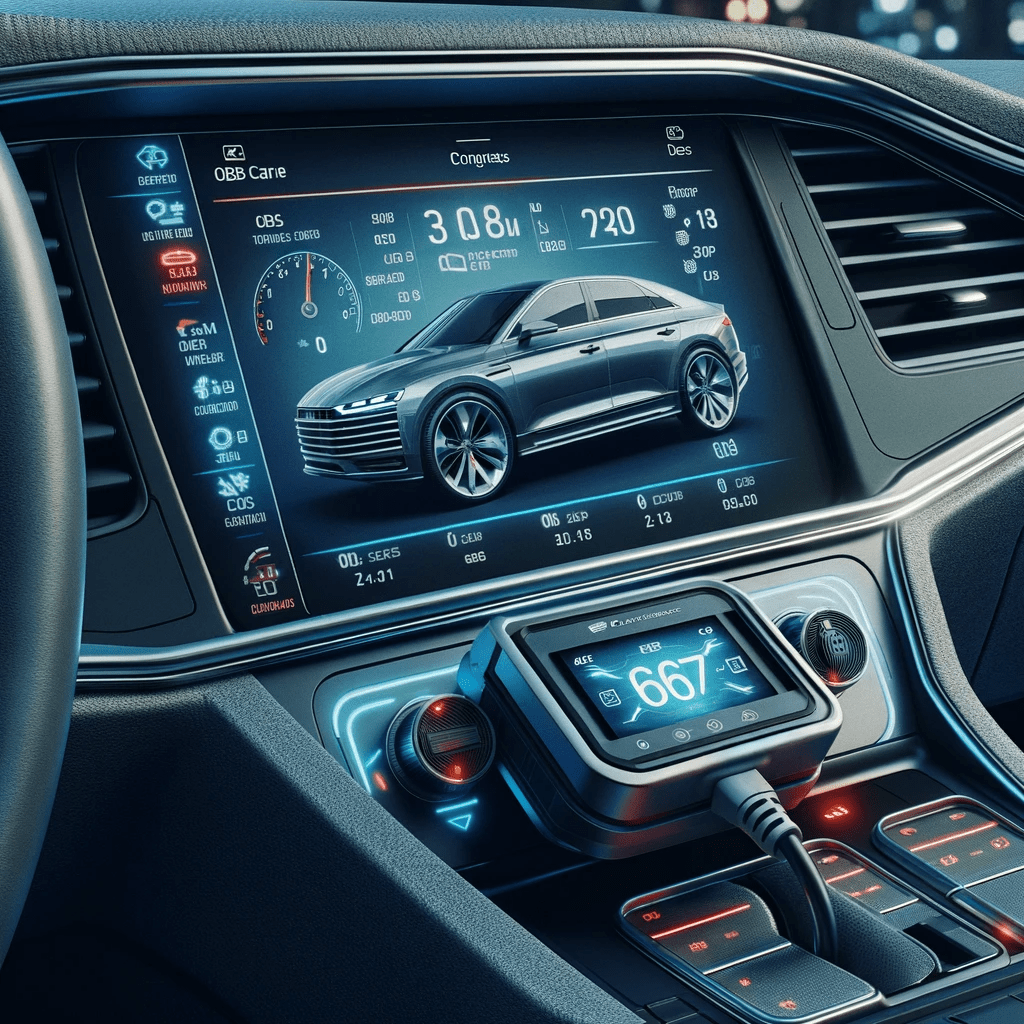
OBD-II Scanner Usage: Mastering Vehicle Diagnostics (2025)
Navigating the World of OBD-II Scanners
In today’s high-tech automotive landscape, OBD-II (On-Board Diagnostics II) scanners have become indispensable for vehicle diagnostics and maintenance. These tools are not just for professional mechanics—car enthusiasts and everyday drivers can use them to troubleshoot vehicle issues, prevent costly repairs, and ensure their cars run efficiently.
Understanding how to properly use an OBD-II scanner can save time, money, and effort while providing real-time insights into a vehicle’s health. This guide covers everything you need to know about OBD-II scanner usage, from how they work to choosing the best model for your needs.
Key Takeaways
| Aspect | Details |
|---|---|
| Indispensable Device | Central to modern vehicle diagnostics and repair. |
| User-Friendly | Designed for both professionals and DIY enthusiasts. |
| Broad Compatibility | Works with most vehicles manufactured after 1996. |
| Cost-Effective | Reduces the need for expensive dealership diagnostics. |
| Real-Time Monitoring | Provides live data for immediate problem-solving. |
| Diverse Applications | Essential for various diagnostic tasks, from emissions testing to engine performance. |
What is an OBD-II Scanner?
An OBD-II scanner is a diagnostic tool that connects to a vehicle’s onboard computer, allowing users to read and interpret diagnostic trouble codes (DTCs). These codes help pinpoint issues related to the engine, transmission, emissions, and other critical vehicle systems.
OBD-II Scanner Features:
✔ Reads and clears error codes
✔ Displays live sensor data (e.g., fuel efficiency, engine temperature)
✔ Provides freeze frame data (snapshot of conditions when an error occurred)
✔ Assists with emissions testing
✔ Supports vehicle performance monitoring
Who Should Use an OBD-II Scanner?
- Car owners: To diagnose check engine lights and minor issues.
- DIY mechanics: For troubleshooting and routine maintenance.
- Professional technicians: For in-depth vehicle diagnostics.
Advantages of Using an OBD-II Scanner
1. Cost Savings
Instead of spending hundreds of dollars on dealership diagnostics, an OBD-II scanner allows vehicle owners to detect issues themselves, saving money on labor costs.
2. Preventative Care
An OBD-II scanner helps detect early warning signs of engine or transmission problems before they become costly repairs.
3. Ease of Use
Modern OBD-II scanners are designed to be plug-and-play devices, making them user-friendly even for those with minimal mechanical knowledge.
4. Improved Vehicle Longevity
Regularly scanning a vehicle can ensure optimal engine performance, fuel efficiency, and emissions compliance.
How to Use an OBD-II Scanner
Using an OBD-II scanner is simple and typically follows these steps:
1. Locate the OBD-II Port
- Found under the dashboard, usually near the driver’s seat.
2. Connect the Scanner
- Insert the scanner’s connector into the OBD-II port.
- For wireless models, connect via Bluetooth or Wi-Fi to a smartphone app.
3. Turn on the Ignition
- Start the engine or turn the key to “On” (without starting the engine).
4. Read and Interpret the Codes
- The scanner will display DTCs (Diagnostic Trouble Codes).
- Use the scanner’s built-in definitions or consult an online DTC database.
5. Clear the Codes (If Needed)
- If the issue has been fixed, use the scanner to reset the check engine light.
- Note: Resetting a code without fixing the issue may cause it to reappear.
Deciphering Diagnostic Trouble Codes (DTCs)
| DTC Category | Description |
|---|---|
| P0XXX | Powertrain issues (engine and transmission) |
| C0XXX | Chassis-related problems (suspension, brakes) |
| B0XXX | Body system issues (airbags, seats, climate control) |
| U0XXX | Communication errors between vehicle modules |
Example: Diagnosing a Check Engine Light
If an OBD-II scanner detects P0420, this indicates an issue with the catalytic converter’s efficiency. Instead of blindly replacing parts, you can:
- Check for exhaust leaks.
- Test the oxygen sensors.
- Ensure the engine is running at optimal air-fuel ratios.
Choosing the Right OBD-II Scanner
When selecting an OBD-II scanner, consider the following factors:
1. Vehicle Compatibility
- Ensure the scanner supports your car’s make and model.
- Some models, like BMW or Mercedes, require manufacturer-specific scanners.
2. Features & Functionality
- Basic Scanners: Read and clear trouble codes.
- Advanced Scanners: Provide live data, ABS/SRS diagnostics, and ECU reprogramming.
3. Budget Considerations
| Scanner Type | Price Range | Best For |
|---|---|---|
| Basic Code Reader | $20 – $50 | DIY users, checking basic codes |
| Mid-Range Bluetooth Scanner | $50 – $150 | Car enthusiasts, real-time monitoring |
| Professional Diagnostic Tool | $150 – $500+ | Mechanics, detailed troubleshooting |
Top Picks for 2025
- Best for DIYers: FIXD Bluetooth Scanner
- Best for Professionals: Autel MaxiCOM MK808
- Best for European Cars: Launch X431
Troubleshooting Common OBD-II Scanner Issues
1. Connection Issues
✅ Ensure the ignition is ON before scanning.
✅ Check for loose or damaged cables.
2. Misleading Readings
✅ Ensure the scanner is compatible with your vehicle’s protocol.
✅ Verify that the vehicle’s battery voltage is stable.
3. Persistent Codes
✅ Some codes require multiple drive cycles to clear.
✅ If the problem persists, a professional mechanic’s assessment may be necessary.
Understanding Different OBD Standards
| OBD Type | Description | Year Introduced | Key Features |
|---|---|---|---|
| OBD-I | First-generation vehicle diagnostics | Pre-1996 | Manufacturer-specific codes, limited capabilities |
| OBD-II | Standardized system for diagnostics | 1996+ | Universal DTCs, real-time data monitoring |
| EOBD | European equivalent of OBD-II | 2001+ | Required for EU vehicles |
| JOBD | Japanese OBD system | Varies | Tailored for Japanese vehicles |
| OBD-III | Future technology with remote diagnostics | Not yet implemented | Potential for wireless monitoring & real-time reporting |

Enhancing Your Vehicle Knowledge with OBD-II Scanners
OBD-II scanners bridge the gap between drivers and their vehicle’s health. Whether troubleshooting a check engine light, monitoring fuel efficiency, or conducting preemptive maintenance, an OBD-II scanner is an essential tool for modern vehicle owners.
Final Thoughts
Mastering the use of an OBD-II scanner is a game-changer for vehicle maintenance. With the right scanner, regular check-ups, and a proactive approach to diagnostics, you can save money, improve performance, and ensure a longer lifespan for your vehicle.
Additional Resources
Check out the best performance car gear available on the market.
